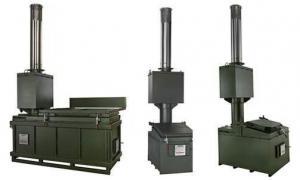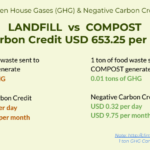CEMAX ENERGY Waste Incinerator (Malaysia only)
Why Waste Incinerator is Needed in Malaysia?
 Are you thinking of waste incinerator for domestic, commercial and industrial requirement in Malaysia?
Are you thinking of waste incinerator for domestic, commercial and industrial requirement in Malaysia?
Undoubtedly, products that we all use every day have a finite lifespan.
Even with initiatives from global governments and environmentalists to reduce, re-use and recycle, lots of these waste still ends up as scraps in landfills.
The chemicals in these products will decompose and will do extensive environmental hazards as they break down naturally.
Plastics waste
Plastics are not all biodegradable. There are still millions of plastic bags being manufactured, used and ending up in landfills. So, the damage is still being done due to our demands.
Organic waste
Organic waste that finds its way to landfills will decay over time releasing a liquid waste that will leach into the earth and potentially into the water system. Even though modern landfills are lined with plastic sheeting, this will itself degrade over around 20 to 30 years when the waste it is containing may take 10 times as long to break down.
Energy from waste (EfW)
Energy from Waste schemes can benefit from the incineration process with the by-products also being used in road maintenance and other projects. The Cynics may say that incineration should not be seen as a better option than recycling, but in fact, the countries that incinerate the most waste also already have the highest rates of recycling for suitable materials, showing that they have explored several avenues for economic waste management including incineration.
Modern incinerator technology
Modern incinerator technology is being developed all the time to ensure that industry standards for emissions can be met if not exceeded. There are scenarios where incineration of waste is the most viable and environmentally safe option for disposal.
Large operators of incinerators need to ensure that they comply with the terms of their permit and license, with energy recovery rates, efficiency and emissions all closely monitored.
Incineration strategies are deployed where there is no space for extensive landfill, in situations that call for clean disposal of medical waste and also has application in areas of conflict as part of a clean-up operation.
Types of waste
Whether it be for general waste disposal or the safe destruction of hazardous or controlled wastes, the incineration process is still widely used and in many cases is the best option available. Industrial waste, large scale refuse projects and waste oil could be used to power our range of incinerators built with energy recovery in mind.
Incinerators are being used all over the world for a wide range of uses. Below are just a few of the ways they are being used:
- Animal & livestock waste (carcass, fallen stock, poop of cattle, horse, pig, poultry, sheep)
- Agricultural & farm waste
- Aquaculture waste
- Confidential paper & document destruction control
- Construction & civil engineering waste
- Cremation control (human, pet)
- Disease outbreak and infected waste (Bird Flu, CoronaVirus, Ebola, Marburg Virus, Newcastle Disease)
- Educational facility waste
- Electronic waste / e-waste
- Hazardous waste
- Hotel & resort waste
- Invasive plant species control
- Laboratory waste (bio-medical, pharmaceutical)
- Marine waste
- Medical waste (controlled drug, health clinic, hospital, pathological)
- Military waste
- Mining & exploration camp waste
- Municipal general waste
- Narcotic control
- Personal Protective Equipment (PPE) kits control
- Refugee camp & aid agencies waste
- Small community waste control


